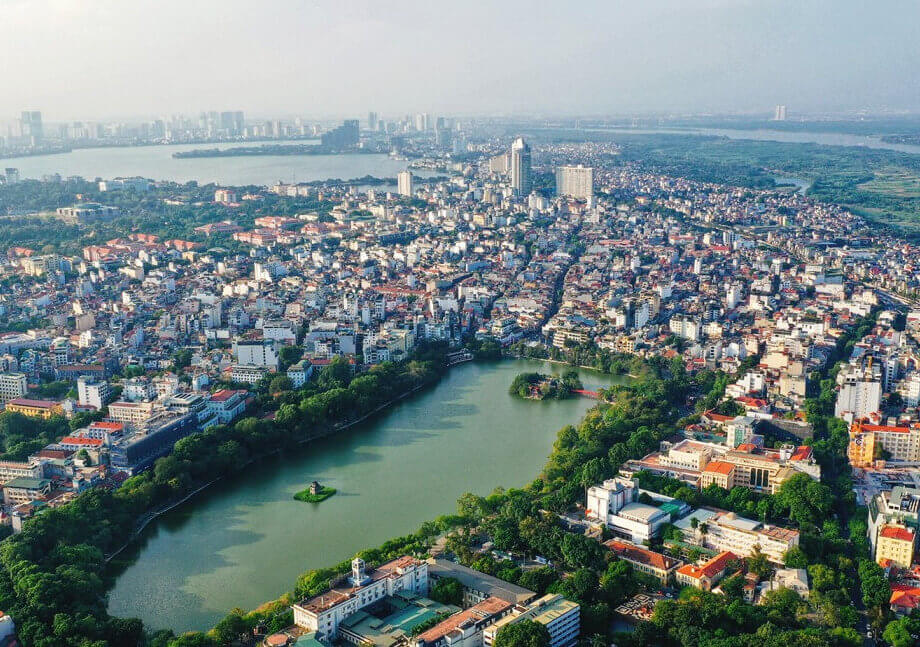Hà Nội’s Rural Transformation: From Standards to Model Communities
Hà Nội, Vietnam’s capital, is undergoing a remarkable transformation in its suburban and rural areas. No longer content with simply meeting the government’s “new-style rural” standards, the city is pioneering a new approach: building model new-style rural areas that blend tradition and modernity, agriculture and technology, and economic growth with environmental sustainability. This ambitious vision is not only reshaping the countryside but also setting a benchmark for rural development across the nation.
- Hà Nội’s Rural Transformation: From Standards to Model Communities
- What Are Model New-Style Rural Areas?
- Hà Nội’s Progress: Surpassing National Targets
- How Are Model Rural Areas Built?
- Empowering Communities: The Heart of the Model
- Smart Agriculture and Digital Transformation
- Challenges and the Road Ahead
- Broader Implications: A Model for the Nation
- In Summary
What Are Model New-Style Rural Areas?
To understand Hà Nội’s achievement, it’s important to grasp the concept of “new-style rural areas.” Launched in 2010 as part of Vietnam’s National Target Program on New Rural Development (Nông thôn mới), this initiative set out to modernize rural infrastructure, improve living standards, and reduce poverty. Communes (the smallest administrative units in Vietnam) are evaluated on criteria such as roads, schools, healthcare, income, and environmental protection.
Model new-style rural areas go a step further. They are not just about ticking boxes for infrastructure or basic services. Instead, they focus on creating high-quality, livable communities where residents enjoy a vibrant cultural life, access to modern services, and sustainable economic opportunities. Hà Nội has developed its own set of criteria for these model areas, tailored to its unique status as a special urban center.
Hà Nội’s Progress: Surpassing National Targets
According to the Office for Coordination of the New-Style Rural Development Programme, all of Hà Nội’s communes have now achieved new-style rural standards. More impressively, 229 communes have been recognized as advanced new-style rural areas, and 109 have achieved model new-style rural area status—surpassing targets set for the 2021–2025 period. This progress is especially notable given the city’s ongoing administrative restructuring and the implementation of a two-tier local government system.
Ngọ Văn Ngô, Deputy Chief of the Standing Office for New Rural Development Coordination in Hà Nội, emphasized the city’s broader vision:
“Hà Nội does not aim to build model new-style rural areas just for the title. We aim for something greater: creating ideal living environments for all. Here, the elderly have access to local healthcare and cultural clubs; children enjoy well-equipped schools and playgrounds; and local workers find jobs through OCOP models, community tourism and service industries.”
This people-centered, quality-driven approach marks a significant shift from the earlier focus on infrastructure alone.
How Are Model Rural Areas Built?
Hà Nội’s model rural areas are characterized by several key features:
- Eco-friendly landscapes: Green spaces, flower-lined streets, mural roads, and model gardens create attractive, healthy environments.
- Smart agriculture: Modern techniques such as greenhouses, automated irrigation, and traceability technology help farmers boost productivity and quality.
- Community-based tourism: Villages leverage their cultural heritage and crafts to attract visitors, increasing local incomes.
- Digital transformation: Smart solutions in governance, education, healthcare, and e-commerce bring rural residents closer to urban-level services.
- Cultural preservation: Traditional festivals, folk singing, and handicrafts are revived, strengthening community identity and pride.
In newly merged communes like Đan Phượng, Ô Diên, and Liên Minh, the focus goes beyond basic standards. These areas have adopted eco-rural models, with residents actively participating in planning, implementation, and maintenance. In Phù Đổng, Bát Tràng, Thuận An, and Gia Lâm, the transition from traditional agriculture to smart, urban-oriented farming is well underway.
One standout example is Hồng Vân Commune, which has successfully combined traditional craft villages with experiential tourism. On weekends, the area attracts hundreds of visitors, boosting household incomes while preserving its cultural soul.
Empowering Communities: The Heart of the Model
Central to Hà Nội’s approach is the belief that rural development must be community-driven. Local authorities emphasize that residents should play a leading role in shaping their future. This philosophy is evident in Phù Đổng Commune, where, even after achieving model status, residents continue to engage in environmental protection, maintain public order, and promote village traditions.
Movements such as “All people unite to build a cultured lifestyle,” “Cultural families,” and “Green, clean, safe villages and neighborhoods” have spread widely, reinforcing community solidarity and self-governance. These initiatives foster a sense of ownership and responsibility, ensuring that improvements are sustainable and meaningful.
Reviving Folk Culture and Rural Tourism
Many localities are reviving folk culture, including traditional festivals, folk singing, and handicrafts. This not only enhances community pride but also supports rural tourism, providing new sources of income. For example, Bát Tràng is famous for its centuries-old pottery, which now draws tourists for hands-on experiences and cultural immersion.
Smart Agriculture and Digital Transformation
Hà Nội’s rural development strategy places a strong emphasis on technology and digital transformation. In agriculture, communes are adopting automated irrigation, soil moisture monitoring, and QR code-based product traceability. These innovations help farmers optimize production costs, improve yields, and ensure food safety.
Several cooperatives have launched agricultural products on e-commerce platforms like Postmart and Voso, enabling wider market access and enhancing the value of rural goods. This digital shift is crucial for integrating rural economies with national and global markets.
Smart Solutions in Public Services
Beyond agriculture, digital transformation is improving governance and service delivery. Rural residents now have better access to healthcare, education, and social welfare services, narrowing the gap between urban and rural living standards. E-government platforms streamline administrative procedures, making it easier for citizens to access information and support.
Challenges and the Road Ahead
Despite these achievements, Hà Nội’s rural development journey is not without challenges. Administrative restructuring at the commune level and the implementation of a two-tier local government system require careful coordination. Ensuring that all communities maintain high standards and continue to innovate will demand ongoing commitment from both authorities and residents.
There is also the challenge of balancing modernization with cultural preservation. As rural areas become more connected and economically dynamic, there is a risk of losing traditional values and identities. Hà Nội’s model emphasizes the importance of integrating cultural heritage into development plans, ensuring that progress does not come at the expense of community spirit.
Broader Implications: A Model for the Nation
Hà Nội’s success in building model new-style rural areas has national significance. As the first locality in Vietnam to develop and apply a dedicated set of criteria for these areas, the city is pioneering a new approach to rural development. Its experience offers valuable lessons for other provinces seeking to modernize their countryside while preserving cultural and environmental values.
The integration of rural development with ecological urbanization and sustainable suburban growth is particularly relevant as Vietnam continues to urbanize rapidly. By putting people and culture at the heart of its strategy, Hà Nội is demonstrating that rural areas can be both modern and rooted in tradition, prosperous and sustainable.
In Summary
- Hà Nội has surpassed national targets in building model new-style rural areas, focusing on quality of life, sustainability, and cultural preservation.
- Model rural areas feature eco-friendly landscapes, smart agriculture, community-based tourism, digital transformation, and strong community engagement.
- Residents play a central role in planning and maintaining improvements, ensuring long-term sustainability.
- Reviving folk culture and promoting rural tourism boost local incomes and community pride.
- Smart agriculture and digital solutions are helping rural economies integrate with broader markets and improve public services.
- Hà Nội’s approach serves as a model for rural development across Vietnam, balancing modernization with tradition and sustainability.




